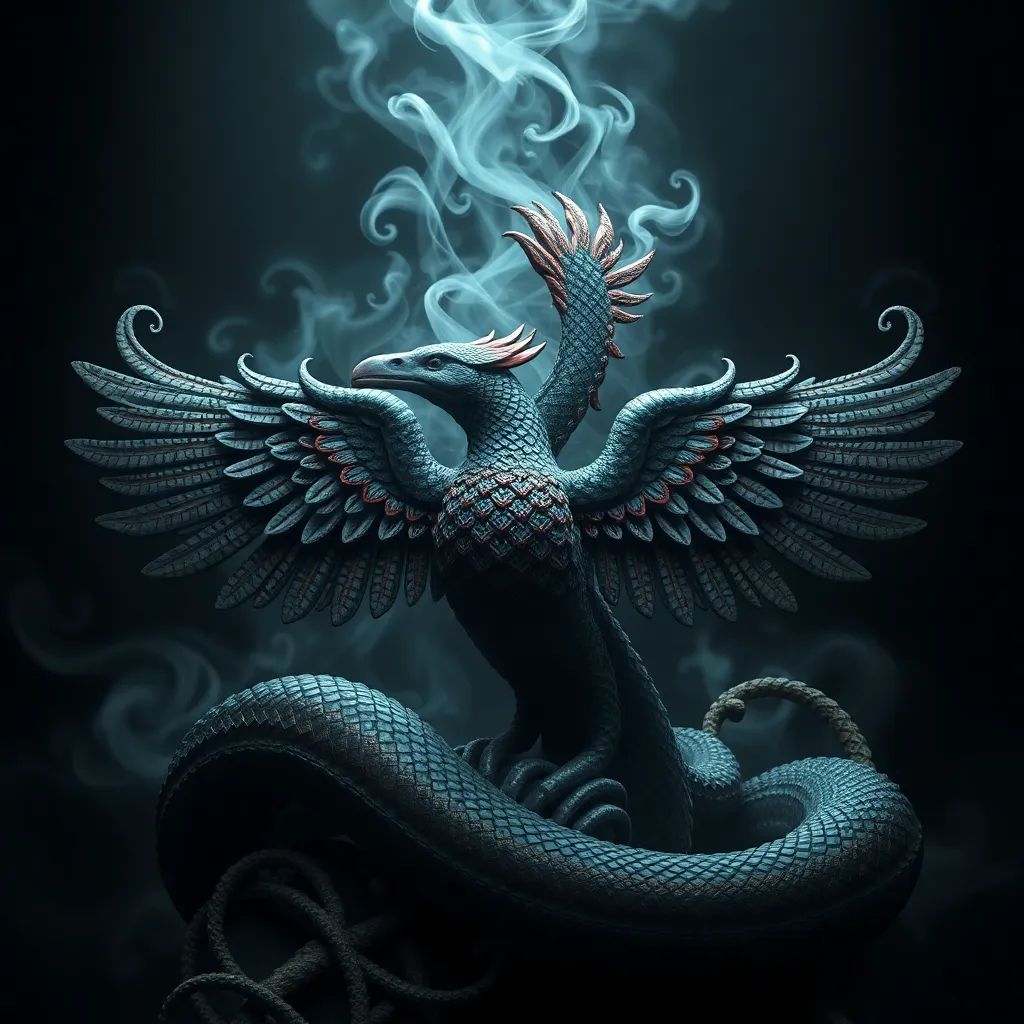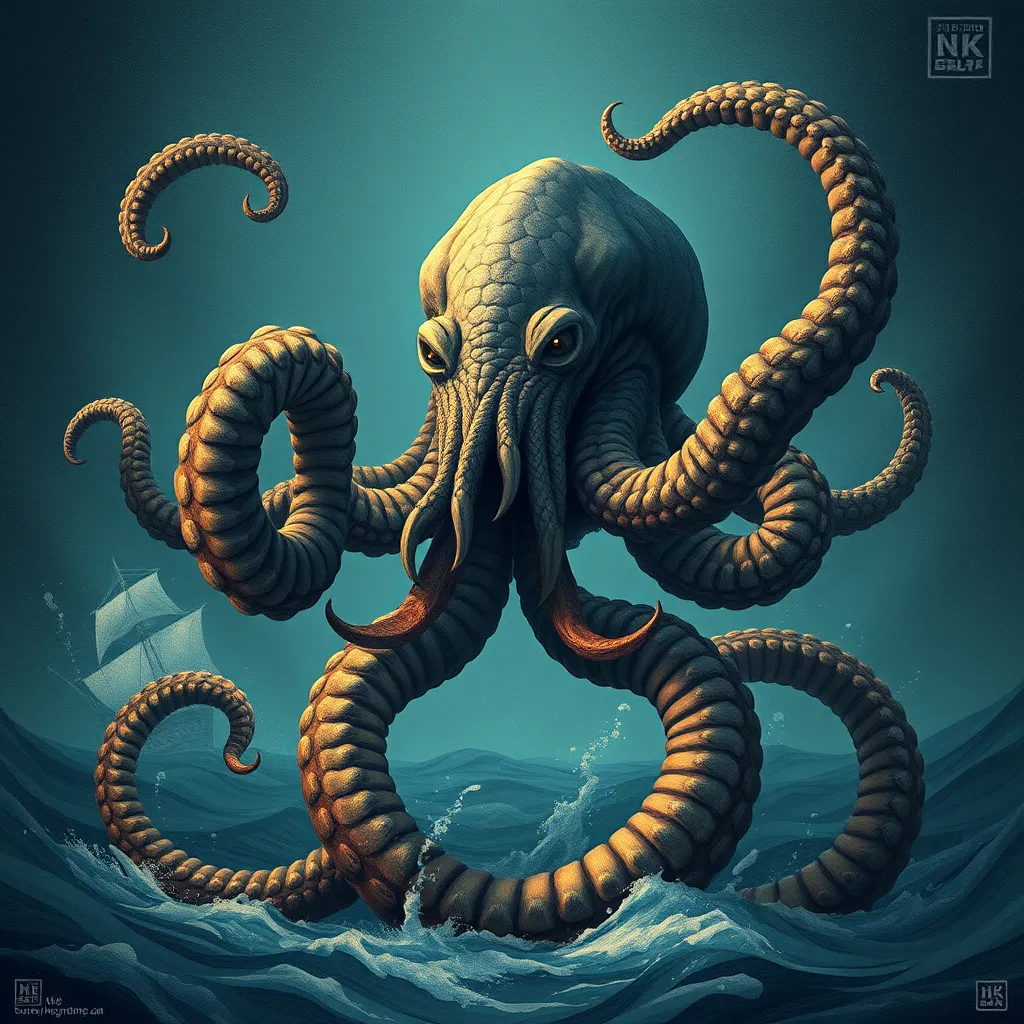The Serpent and the Bird: Exploring the Relationship between Cipactli and Quetzalcoatl in Mesoamerican Mythology
I. Introduction
Mesoamerican mythology is a rich tapestry woven from the beliefs and stories of ancient civilizations, showcasing the interplay between gods, nature, and humanity. Among its most significant figures are Cipactli and Quetzalcoatl, who embody fundamental aspects of creation and existence. This article aims to analyze the complex relationship between these two mythological figures, exploring their individual characteristics, roles in creation myths, and the broader cultural implications of their interactions.
II. Cipactli: The Earth Monster
Cipactli is often depicted as a monstrous creature, embodying the earth itself and representing chaos and primal creation. Descriptions of Cipactli vary, but common features include a crocodilian body, multiple teeth, and a fierce demeanor. This fearsome creature is not merely a symbol of destruction but also a crucial player in the formation of the world.
In Mesoamerican creation myths, Cipactli plays a pivotal role as the primordial being from which the earth is formed. According to the myths, the gods had to subdue Cipactli to create the world, illustrating the struggle between chaos and order. The symbolism of Cipactli extends beyond its monstrous appearance; it represents the raw, untamed forces of nature that must be harnessed for civilization to flourish.
Symbolism of Cipactli in Mesoamerican Culture
- Cipactli symbolizes the earth and its fertility.
- Represents the chaotic forces that must be tamed for creation.
- Embodies the cycle of life, death, and rebirth in nature.
III. Quetzalcoatl: The Feathered Serpent
Quetzalcoatl, known as the Feathered Serpent, is one of the most venerated deities in Mesoamerican mythology. His origins can be traced back to various cultures, including the Aztecs and the Toltecs, where he is associated with wind, air, and learning. Quetzalcoatl is often depicted with the body of a serpent adorned with vibrant feathers, symbolizing the connection between the earth and the sky.
Beyond his divine attributes, Quetzalcoatl is revered as a cultural hero who brought knowledge, agriculture, and civilization to humanity. His significance in Mesoamerican civilizations cannot be overstated, as he embodies the ideals of wisdom, creativity, and ethical governance.
The Dual Nature of Quetzalcoatl
- As a deity, he represents creation, life, and knowledge.
- As a cultural hero, he symbolizes the quest for enlightenment and progress.
- His duality embodies the balance of earthly and heavenly realms.
IV. The Creation Myth: Cipactli and the Birth of the Cosmos
The creation myth involving Cipactli and Quetzalcoatl is a fascinating narrative that illustrates the dynamic between chaos and order. In the beginning, Cipactli existed as a formless mass, representing the primordial chaos. The gods, desiring to create the world, faced the challenge of subduing Cipactli. It is Quetzalcoatl who steps forward, using his wisdom and strength to tame the monster.
This confrontation leads to the splitting of Cipactli, whose body becomes the earth, and from his remnants, the cosmos is formed. Quetzalcoatl plays a crucial role in shaping the world, as he not only defeats Cipactli but also breathes life into the newly formed earth.
Interactions between Cipactli and Quetzalcoatl during Creation
- Cipactli represents the chaotic forces of nature.
- Quetzalcoatl embodies wisdom and order.
- Their interaction symbolizes the necessary balance between chaos and creation.
V. Symbolism of the Serpent and the Bird
The motifs of the serpent and the bird are prevalent in Mesoamerican art, often representing the duality of existence. The serpent, associated with Cipactli, evokes themes of chaos, darkness, and the primal aspects of nature. In contrast, Quetzalcoatl, as the feathered serpent, symbolizes elevation, spirituality, and the aspiration toward enlightenment.
This duality extends to the cultural interpretations of their relationship, where Cipactli and Quetzalcoatl embody the balance of life and death, creation and destruction. The interplay of these motifs can be seen in various artistic representations, where the merging of the serpent and the bird signifies harmony between opposing forces.
VI. Theological Implications
The relationship between Cipactli and Quetzalcoatl carries profound theological implications for Mesoamerican civilizations. It reflects the balance of chaos (Cipactli) and order (Quetzalcoatl), which is foundational to the understanding of existence. This duality influences religious practices, rituals, and societal values, emphasizing the importance of maintaining harmony in the universe.
Moreover, the myths surrounding Cipactli and Quetzalcoatl serve as a framework for governance, where leaders are often seen as mediators between these primal forces. The relationship underscores the necessity for balance in leadership and society, promoting values of wisdom, respect for nature, and the pursuit of knowledge.
VII. Comparative Analysis with Other Mythologies
When examining the creation myths involving Cipactli and Quetzalcoatl, intriguing parallels emerge with other global mythologies. Many cultures feature narratives that depict the struggle between chaos and order, often personified by monstrous beings and heroic figures. These similarities suggest a universal theme of duality and the cyclical nature of life.
The influence of Cipactli and Quetzalcoatl extends beyond Mesoamerican mythology, as their themes have been echoed in later narratives, emphasizing the enduring relevance of their stories. Cross-cultural themes of duality and balance continue to resonate in contemporary interpretations of mythology, art, and literature.
VIII. Conclusion
In summary, the relationship between Cipactli and Quetzalcoatl encapsulates key insights into Mesoamerican mythology, highlighting the interplay of chaos and order in creation narratives. Their symbolism and interactions offer a profound understanding of cultural values and the human experience. As we reflect on their enduring legacy, it becomes evident that the lessons embedded in these myths continue to inform contemporary culture, inviting us to explore the balance of opposing forces in our own lives.
Ultimately, the stories of Cipactli and Quetzalcoatl remind us of the importance of harmony, wisdom, and the interconnectedness of all aspects of existence, making their mythological journey as relevant today as it was in ancient times.



